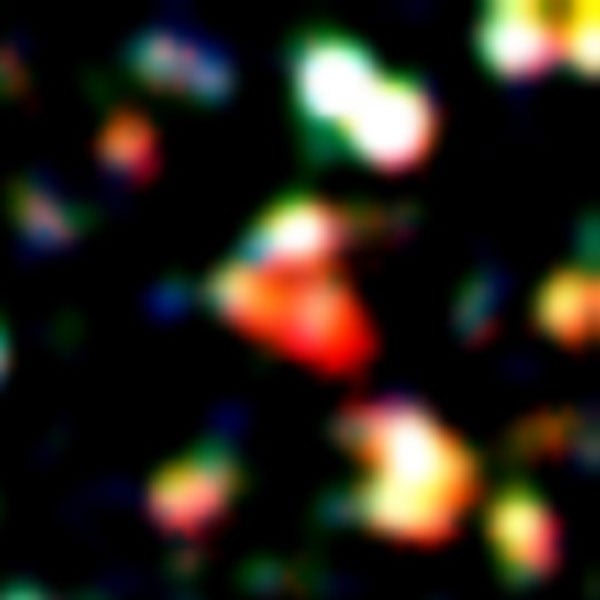Recent results from Herschel show that gas-rich galaxies in the early universe were able to create stars at an intense rate. In the nearby universe, we only see such high rates of star formation when galaxies collide. However, the Herschel data show that while mergers triggered star formation in some galaxies in the early universe, the majority of star forming galaxies were not undergoing interactions; the amount of gas present drove the formation.
Georgios Magdis from the University of Oxford, United Kingdom, and his colleagues have now carried out a detailed study of an example of a normal and a merging galaxy observed as part of the Great Observatories Origins Deep Survey (GOODS) Herschel program. GOODS-Herschel is led by David Elbaz from CEA in Saclay, France.
“The aim of this study was to estimate the amount of gas that the galaxies contained and understand how that affected the way they formed stars,” said Magdis. “In contrast to what we see in the nearby universe, it was only in the minority of the intensively star-forming galaxies that star formation activity was triggered by merging of galaxies.”
“The dominant population had very large gas reservoirs that could induce and maintain a high birth rate of stars without the need of galaxy ‘cannibalism,’” Magdis continued. “Such episodes of star formation naturally resulted from steady, long-lasting accretion of gas, forming these ‘cosmic beacons’ of our universe. However, our study shows that the other population — merging galaxies — had 10 times less gas, but the interactions made them more efficient in converting gas into stars. These galaxies experienced an extreme but nevertheless short-lived firework of star formation.“
The team selected the galaxy BzK-21000, observed approximately 4 billion years after the Big Bang, as an example of the “normal” gas-rich galaxy and GN20, a member of a rich protocluster of galaxies observed approximately 1.5 billion years after the Big Bang, as an example of an interacting galaxy. Scientists cannot measure the mass of the gas in the galaxies directly as it mostly consists of hydrogen, which is difficult to detect. Instead, the team measured levels of dust and carbon monoxide and, assuming that there are constant ratios with the mass of hydrogen present, used these to estimate the amount of gas present. The measurements were supplemented by radio detections from the Very Large Array (VLA) to constrain the uncertainties in the estimates for the mass of dust.
“This result comes to highlight the minor contribution of mergers in the history of star formation activity and point towards a more quiet, smooth, and ‘independent’ evolution of galaxies throughout the cosmic time,” said Magdis.










